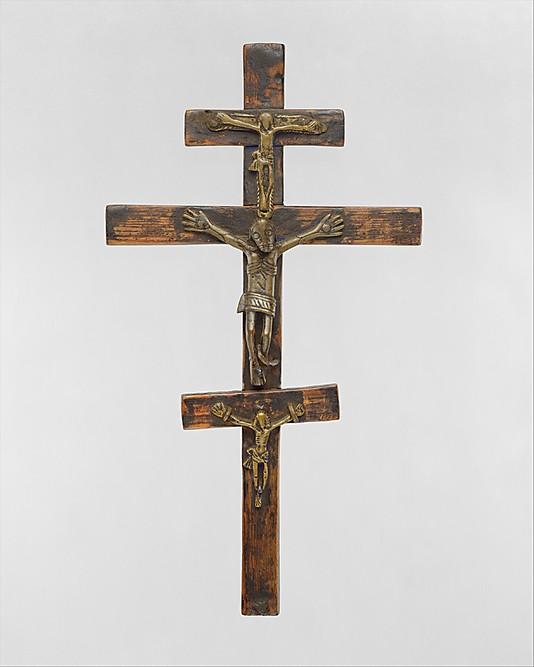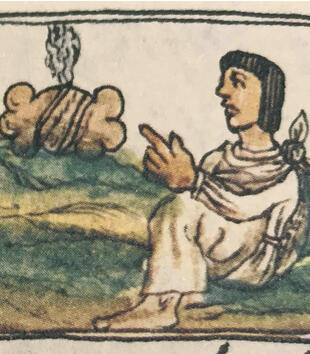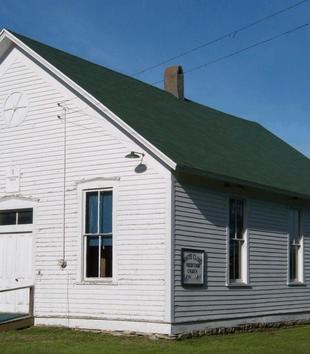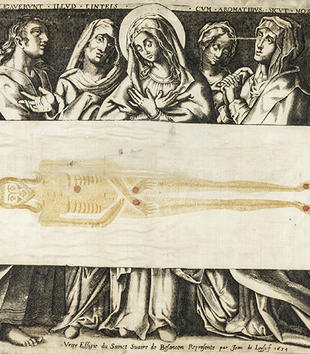Precious yellow brass, wood darkened by wear, white pigment, red powder, geometric designs, and copper nails are some of the constitutive parts of Kongo crucifixes. Illustrated here is one of an almost endless variety of Christian objects created in the west central African kingdom of Kongo between the sixteenth and the nineteenth centuries. Elaborately crafted artworks, jealously kept insignia of power, and piously cherished devotional paraphernalia, the central African crucifixes illustrate the Kongo people’s deep and enduring engagement with the visual forms and religious message of Christianity.
The highly centralized kingdom of Kongo emerged in the 1300s and extended South of the Congo River over the western part of today’s Democratic Republic of the Congo and Angola. Its political organization centered on the person of the king who ruled with absolute power from his capital city over large territories through governors he sent from his court to the provincial capitals. The kingdom entered into European history in the 1480s with the arrival on its shores of Portuguese explorers and clerics in search of the new trade routes to India and new allies for Christendom. The result of this early contact with Europeans was the willful conversion of the Kongo monarchs to Catholicism and their decision to impose the new faith as the kingdom's official religion. That decree opened a new era in the history of central Africa, defined by its involvement in the commercial, political, and religious networks of the early modern Atlantic World. In that period ranging from the late fifteenth century to the unraveling of the kingdom in the late 1900s, the people of the Kongo embraced the changes brought about by the multi-cultural interactions in which they took part as actors of the Atlantic system and willfully integrated these novelties into their own political, religious, and artistic worldviews.
Kongo crucifixes emerged in this era. Crucial parts of the kingdom’s elite regalia, they heralded the power and legitimacy of kings and provincial rulers. Yet, they also encompassed a deeply religious dimension. Independently of foreign pressure, the artists and patrons who created the crosses confronted, merged, and redeployed in this new type of object local and foreign understandings and representations of the supernatural and its manifestations in the world. On the one hand, their crucifixes showcase expressively represented dying Christ figures. On the other hand, their crosses also communicated locally grounded ideas about the permeability between the world of the living and the world of the dead, expressed in central Africa through the sign of the cross. Thus Kongo crucifixes served as spaces of correlation that central Africans used to bring together the Catholic narrative of Christ’s death and resurrection with age-old, local ideas about fluid connections between life and death. The new type of object recast Christianity and central African cosmology into two intricately linked parts of a single system of thought. With Kongo Christianity, Catholic dogma endowed central Africa’s invisible world with new supernatural powers. Manifestations of the presence of God, witnessed by the people of the Kongo and recognized by the Roman Catholic Church, widened the perimeter of Christian orthodoxy.
This crucifix, now in the Metropolitan Museum of Art, also illustrates how the people of the Kongo engaged not only with Christian dogma but also with the European artistic forms that arrived in their land with the new religion. Three Christ figures have been arranged on an unusual triple cross that has over the years been repeatedly rubbed, held, and anointed, creating a thick patina on the wood and smoothing the surface of the brass elements. The artist who composed the object had access to two types of brass figures. At the top and bottom he placed small devotional objects of the kind that missionaries imported in the region by the thousands and that local artisans frequently recast in direct molds. A skilled Kongo metalworker however created the central Christ without a direct European prototype. The figure is visibly inspired from known imported examples, but its features have been reworked according to what became the local canon for Kongo Christ including prominent and stylized ribs, pointed knees, oversized feet and hands, simplified facial hair, and a carefully depicted loincloth. Ultimately, patrons and artists in the Kongo reformulated Christian figures into objects of their own, both visibly Christian and perceptibly central African and altogether fit to herald Kongo Christianity.



